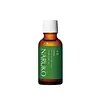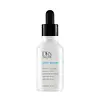What's inside
What's inside
 Key Ingredients
Key Ingredients

 Benefits
Benefits

 Concerns
Concerns

 Ingredients Side-by-side
Ingredients Side-by-side

Salicylic Acid 2%
MaskingSulfur 0.025%
AntiseborrhoeicWater
Skin ConditioningAlcohol
AntimicrobialZinc Oxide
Cosmetic ColorantButylene Glycol
HumectantPolysorbate 80
EmulsifyingOlive Oil PEG-7 Esters
EmollientMagnesium Aluminum Silicate
AbsorbentPyridoxine Hcl
Skin ConditioningPropylene Glycol
HumectantParfum
MaskingZinc PCA
HumectantPhenoxyethanol
PreservativePentylene Glycol
Skin ConditioningGlycerin
HumectantMenthol
MaskingPEG-40 Hydrogenated Castor Oil
EmulsifyingCamphor
MaskingPanthenol
Skin ConditioningAllantoin
Skin ConditioningMentha Viridis Leaf Oil
AstringentHamamelis Virginiana Water
AstringentSpiraea Ulmaria Flower Extract
Skin ConditioningChamomilla Recutita Flower Extract
MaskingLens Esculenta Seed Extract
Skin ProtectingIodopropynyl Butylcarbamate
PreservativeCI 77015
Cosmetic ColorantPotassium Sorbate
PreservativeSodium Benzoate
MaskingMelaleuca Alternifolia Leaf Oil
AntioxidantTremella Fuciformis Sporocarp Extract
AntioxidantEthylhexylglycerin
Skin ConditioningMethylpropanediol
SolventKalanchoe Pinnata Leaf Extract
MaskingChlorphenesin
AntimicrobialArtemisia Umbelliformis Extract
Skin ConditioningEpilobium Fleischeri Extract
Skin ConditioningLeontopodium Alpinum Extract
Skin ConditioningCitric Acid
BufferingCamellia Sinensis Leaf Extract
AntimicrobialPeucedanum Ostruthium Leaf Extract
Skin ConditioningScutellaria Alpina Flower/Leaf/Stem Extract
Skin ConditioningCalendula Officinalis Flower Extract
MaskingGlycyrrhiza Glabra Root Extract
BleachingGinkgo Biloba Leaf Extract
Skin ConditioningSalicylic Acid 2%, Sulfur 0.025%, Water, Alcohol, Zinc Oxide, Butylene Glycol, Polysorbate 80, Olive Oil PEG-7 Esters, Magnesium Aluminum Silicate, Pyridoxine Hcl, Propylene Glycol, Parfum, Zinc PCA, Phenoxyethanol, Pentylene Glycol, Glycerin, Menthol, PEG-40 Hydrogenated Castor Oil, Camphor, Panthenol, Allantoin, Mentha Viridis Leaf Oil, Hamamelis Virginiana Water, Spiraea Ulmaria Flower Extract, Chamomilla Recutita Flower Extract, Lens Esculenta Seed Extract, Iodopropynyl Butylcarbamate, CI 77015, Potassium Sorbate, Sodium Benzoate, Melaleuca Alternifolia Leaf Oil, Tremella Fuciformis Sporocarp Extract, Ethylhexylglycerin, Methylpropanediol, Kalanchoe Pinnata Leaf Extract, Chlorphenesin, Artemisia Umbelliformis Extract, Epilobium Fleischeri Extract, Leontopodium Alpinum Extract, Citric Acid, Camellia Sinensis Leaf Extract, Peucedanum Ostruthium Leaf Extract, Scutellaria Alpina Flower/Leaf/Stem Extract, Calendula Officinalis Flower Extract, Glycyrrhiza Glabra Root Extract, Ginkgo Biloba Leaf Extract
Water
Skin ConditioningPropylene Glycol
HumectantAlcohol
AntimicrobialButylene Glycol
HumectantEthoxydiglycol
HumectantPolysorbate 20
EmulsifyingPEG-40 Hydrogenated Castor Oil
EmulsifyingGlycerin
Humectant4-Terpineol
MaskingPanthenol
Skin ConditioningSodium Lactate
BufferingSalicylic Acid
MaskingEthylhexylglycerin
Skin ConditioningAloe Barbadensis Leaf Juice
Skin ConditioningT-Butyl Alcohol
PerfumingArctium Majus Root Extract
Skin ConditioningSalvia Officinalis Leaf Extract
CleansingNasturtium Officinale Extract
PerfumingCitrus Limon Peel Extract
EmollientFucus Vesiculosus Extract
EmollientSaponaria Officinalis Leaf/Root Extract
Skin ConditioningHedera Helix Leaf Extract
Skin ConditioningDenatonium Benzoate
MaskingPhenoxyethanol
PreservativeChlorphenesin
AntimicrobialPotassium Sorbate
PreservativeSodium Benzoate
MaskingWater, Propylene Glycol, Alcohol, Butylene Glycol, Ethoxydiglycol, Polysorbate 20, PEG-40 Hydrogenated Castor Oil, Glycerin, 4-Terpineol, Panthenol, Sodium Lactate, Salicylic Acid, Ethylhexylglycerin, Aloe Barbadensis Leaf Juice, T-Butyl Alcohol, Arctium Majus Root Extract, Salvia Officinalis Leaf Extract, Nasturtium Officinale Extract, Citrus Limon Peel Extract, Fucus Vesiculosus Extract, Saponaria Officinalis Leaf/Root Extract, Hedera Helix Leaf Extract, Denatonium Benzoate, Phenoxyethanol, Chlorphenesin, Potassium Sorbate, Sodium Benzoate
 Reviews
Reviews

Ingredients Explained
These ingredients are found in both products.
Ingredients higher up in an ingredient list are typically present in a larger amount.
Alcohol comes in many different forms. Different types of alcohol will have different effects on skin. This ingredient is usually an astringent alcohol.
These alcohols are drying on the skin. They may strip away your skin's natural oils and even damage your skin barrier. Astringent alcohols may also irritate skin.
Other types of astringent alcohols include:
According to the National Rosacea Society based in the US, you should be mindful of products with these alcohols in the top half of ingredients.
Any type of sanitizing product will have high amounts of alcohol to help kill bacteria and viruses.
Fatty alcohols come from plant oils such as coconut oil. These can help hydrate the skin and are non-irritating. Some fatty alcohols include cetyl and stearyl alcohol.
Learn more about AlcoholButylene Glycol (or BG) is used within cosmetic products for a few different reasons:
Overall, Butylene Glycol is a safe and well-rounded ingredient that works well with other ingredients.
Though this ingredient works well with most skin types, some people with sensitive skin may experience a reaction such as allergic rashes, closed comedones, or itchiness.
Learn more about Butylene GlycolChlorphenesin is a synthetic preservative. It helps protect a product against bacteria in order to extend shelf life. In most cases, Chlorphenesin is paired with other preservatives such as phenoxyethanol and caprylyl glycol.
Chlorphenesin is a biocide. This means it is able to help fight the microorganisms on our skin. It is also able to fight odor-releasing bacteria.
Chlorphenesin is soluble in both water and glycerin.
Studies show Chlorphenesin is easily absorbed by our skin. You should speak with a skincare professional if you have concerns about using Chlorphenesin.
Learn more about ChlorphenesinEthylhexylglycerin (we can't pronounce this either) is commonly used as a preservative and skin softener. It is derived from glyceryl.
You might see Ethylhexylglycerin often paired with other preservatives such as phenoxyethanol. Ethylhexylglycerin has been found to increase the effectiveness of these other preservatives.
Glycerin is already naturally found in your skin. It helps moisturize and protect your skin.
A study from 2016 found glycerin to be more effective as a humectant than AHAs and hyaluronic acid.
As a humectant, it helps the skin stay hydrated by pulling moisture to your skin. The low molecular weight of glycerin allows it to pull moisture into the deeper layers of your skin.
Hydrated skin improves your skin barrier; Your skin barrier helps protect against irritants and bacteria.
Glycerin has also been found to have antimicrobial and antiviral properties. Due to these properties, glycerin is often used in wound and burn treatments.
In cosmetics, glycerin is usually derived from plants such as soybean or palm. However, it can also be sourced from animals, such as tallow or animal fat.
This ingredient is organic, colorless, odorless, and non-toxic.
Glycerin is the name for this ingredient in American English. British English uses Glycerol/Glycerine.
Learn more about GlycerinPanthenol is a common ingredient that helps hydrate and soothe the skin. It is found naturally in our skin and hair.
There are two forms of panthenol: D and L.
D-panthenol is also known as dexpanthenol. Most cosmetics use dexpanthenol or a mixture of D and L-panthenol.
Panthenol is famous due to its ability to go deeper into the skin's layers. Using this ingredient has numerous pros (and no cons):
Like hyaluronic acid, panthenol is a humectant. Humectants are able to bind and hold large amounts of water to keep skin hydrated.
This ingredient works well for wound healing. It works by increasing tissue in the wound and helps close open wounds.
Once oxidized, panthenol converts to pantothenic acid. Panthothenic acid is found in all living cells.
This ingredient is also referred to as pro-vitamin B5.
Learn more about PanthenolPeg-40 Hydrogenated Castor Oil is derived from castor oil and polyethylene glycol (PEG). It is used as a emollient and emulsifier.
As an emulsifier, it helps prevent ingredients from separating. It also helps make the other ingredients more soluble; it is often used to solubilize fragrances. This increases spreadability and elongates shelf life in a product.
Emollients help soothe and soften the skin. They do this by creating a protective film on your skin. This barrier helps trap moisture and keeps your skin hydrated. Emollients may be effective at treating dry or itchy skin.
This ingredient may or may not be vegan, depending on the source.
Peg-40 Hydrogenated Castor Oil may not be fungal-acne safe. We recommend speaking with a professional if you have any questions or concerns.
Learn more about PEG-40 Hydrogenated Castor OilPhenoxyethanol is a preservative that has germicide, antimicrobial, and aromatic properties. Studies show that phenoxyethanol can prevent microbial growth. By itself, it has a scent that is similar to that of a rose.
It's often used in formulations along with Caprylyl Glycol to preserve the shelf life of products.
Potassium Sorbate is a preservative used to prevent yeast and mold in products. It is commonly found in both cosmetic and food products.
This ingredient comes from potassium salt derived from sorbic acid. Sorbic acid is a natural antibiotic and effective against fungus.
Both potassium sorbate and sorbic acid can be found in baked goods, cheeses, dried meats, dried fruit, ice cream, pickles, wine, yogurt, and more.
You'll often find this ingredient used with other preservatives.
Learn more about Potassium SorbatePropylene Glycol is an odorless, colorless liquid. As a humectant, it helps skin retain moisture. It also aids in delivering active ingredients.
Another role of this ingredient is preventing a product from melting or freezing. Propylene glycol also adds antimicrobrial properties to a product, elongating product lifespan.
This ingredient is considered an organic alcohol and commonly added into both cosmetics and foods.
Those with sensitive skin or conditions may develop a rash when using this ingredient.
Learn more about Propylene GlycolSalicylic Acid (also known as beta hydroxy acid or BHA) is a well-known ingredient for treating skin that struggles with acne and clogged pores. It exfoliates both the skin's surface and deep within the pores to help clear out buildup, control oil, and reduce inflammation.
Unlike AHAs (alpha hydroxy acids), salicylic acid is oil-soluble. This allows it to penetrate into pores which makes it especially effective for treating blackheads and preventing future breakouts.
Salicylic acid is also known for its soothing properties. It has a similar structure to aspirin and can calm inflamed or irritated skin, making it a good option for acne-prone skin that is also sensitive.
Concentrations of 0.5-2% are recognized by the U.S. FDA as an over-the-counter topical acne product.
It can cause irritation and/or dryness if one's skin already has a compromised moisture barrier, so it's best to focus on repairing that before introducing this ingredient into your routine.
While salicylic acid does not increase sun sensitivity, it’s still important to wear sunscreen daily to protect your skin.
If you are looking for the ingredient called BHA or Butylated Hydroxyanisole, click here.
Learn more about Salicylic AcidSodium Benzoate is a preservative. It's used in both cosmetic and food products to inhibit the growth of mold and bacteria. It is typically produced synthetically.
Both the US FDA and EU Health Committee have approved the use of sodium benzoate. In the US, levels of 0.1% (of the total product) are allowed.
Sodium benzoate works as a preservative by inhibiting the growth of bacteria inside of cells. It prevents the cell from fermenting a type of sugar using an enzyme called phosphofructokinase.
It is the salt of benzoic acid. Foods containing sodium benzoate include soda, salad dressings, condiments, fruit juices, wines, and snack foods.
Studies for using ascorbic acid and sodium benzoate in cosmetics are lacking, especially in skincare routines with multiple steps.
We always recommend speaking with a professional, such as a dermatologist, if you have any concerns.
Learn more about Sodium BenzoateWater. It's the most common cosmetic ingredient of all. You'll usually see it at the top of ingredient lists, meaning that it makes up the largest part of the product.
So why is it so popular? Water most often acts as a solvent - this means that it helps dissolve other ingredients into the formulation.
You'll also recognize water as that liquid we all need to stay alive. If you see this, drink a glass of water. Stay hydrated!
Learn more about Water